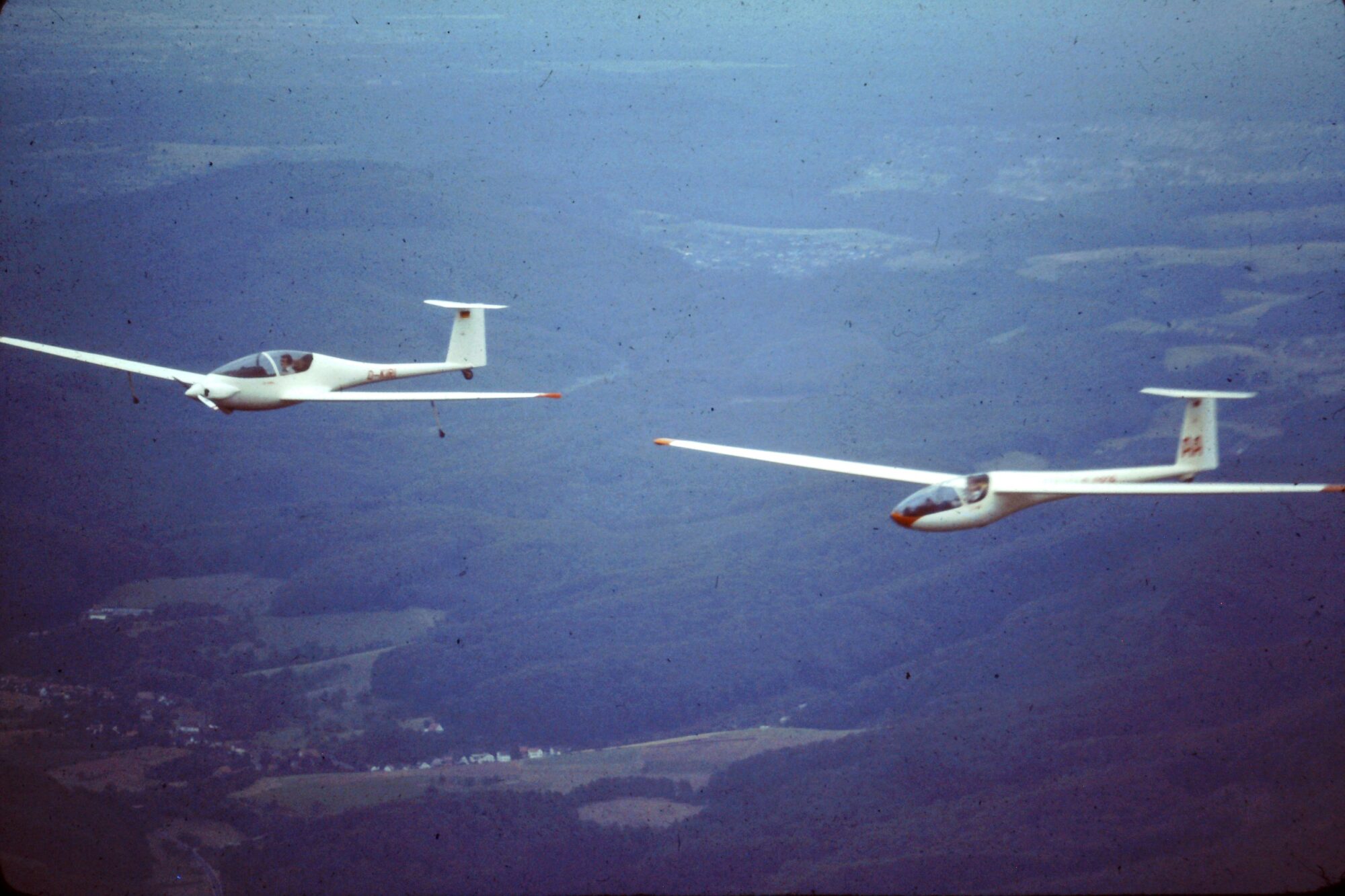Backgroundstory
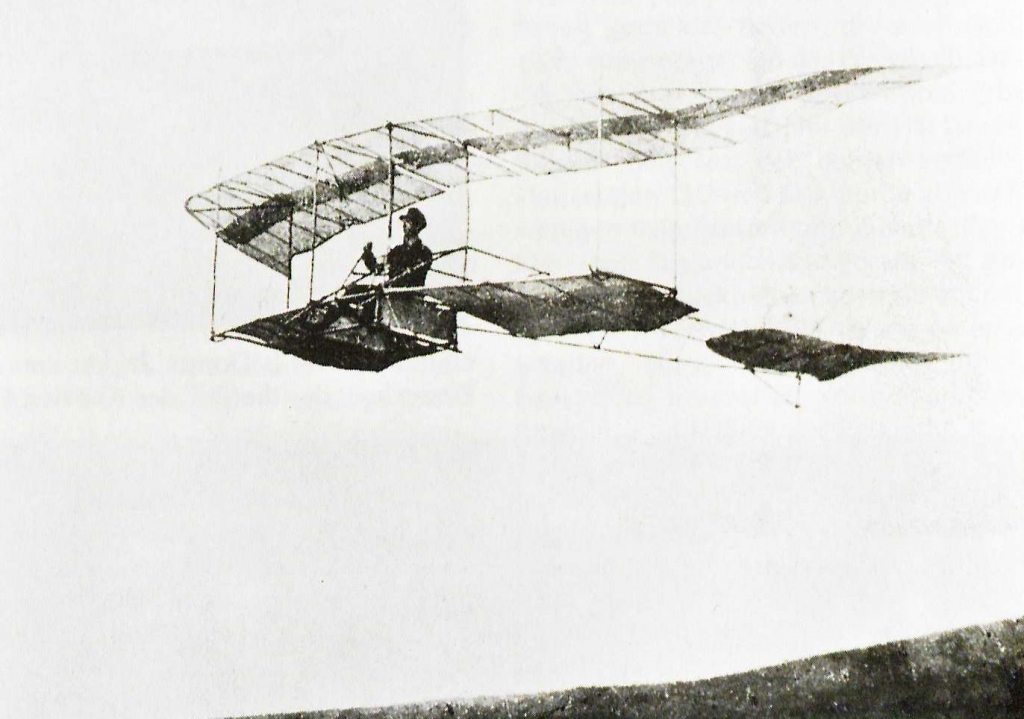
It all began with a small group of aviation enthusiasts in high school, together they founded the so called Flug-Sport-Vereinigung (FSV = aviation sportsclub) Darmstadt. Heavily inspired by an aviation exhibition in Frankfurt they began constructing their own gliders and flight testing them at Wasserkuppe (Mountain peak in Hesse). Within few years 10 different Designs with 15 modifications were built, tested and flown.
The now students of darmstadt Technical University had managed to turn their enthusiasm into science!
In 1913 the first ever proffersorship in germany was established in the aviation branche at darmstadt polytechnic and in the same year the FSV carried on to build their first motorized aircraft. Sadly though it never made it out of flight testing, the reason being the breakout of WW1, leading to the recruitment of FSV members.
The first Years
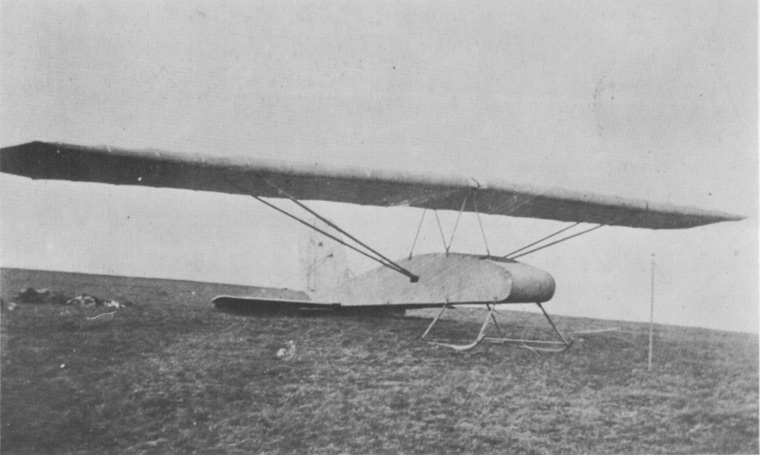
After WW1 the allies banned any sort of motorized flight in germany. Undergrads of TuD came together with the hope of reviving aviation without the need of an engine. It took about a year until a board was elected but then in 1920 the Akademische Fliegergruppe Darmstadt (Academic flying-group Darmstadt) was created. They quickly got to work on their first project: the D-1. It was an aspired high wing aircraft designed by Eugen von Lößl, who was fatally wounded in an accident sadly never whitnessing the final aircraft. In May 1921 the students began designing the D-3 “Nolleputzchen” with the goal of participating in the Rhöncompetition at Wasserkuppe in August. Arriving far too late at Rhöncompetition due to damage in transportation the D-3 delivered a rather mediocre performance. Nevertheless alot of experience was gained and just a year later the Akaflieg Darmstadt was breaking world records with Hans Hackmack flying for 1 hour and 18 minutes straight on their D-6 “Geheimrat”. In 1923 a crosscountry record was broken with the D-9 “Konsul” for flying a distance of 18,7 Kilometers. At this point the students had a well kept workshop, experienced members and gliders also available for flight lessons. Time had passed and graduation was getting close the next generation of Akaflieger was left in good hands.
The Akaflieg develops
In the beginning there was no real know-how or theoretical knowledge that people could rely on
while developing aircaft. It was all pure gut feeling mixed with lots of experience. That kind of approach was
slowly changing when fundamentals of aeronatics became more present in Universities. Still anything the lectures couldn’t yet teach the Akaflieger would teach / research themselves, taking a lead role in the leap from hang gliding to thermalling. This leap would also mean a change in the glider requirements for example improving the glide ratio and cruise speed for crosscountry flying while lowering the weight and reducing wingspan – enhancing the agility –
for thermalling.
A new concept
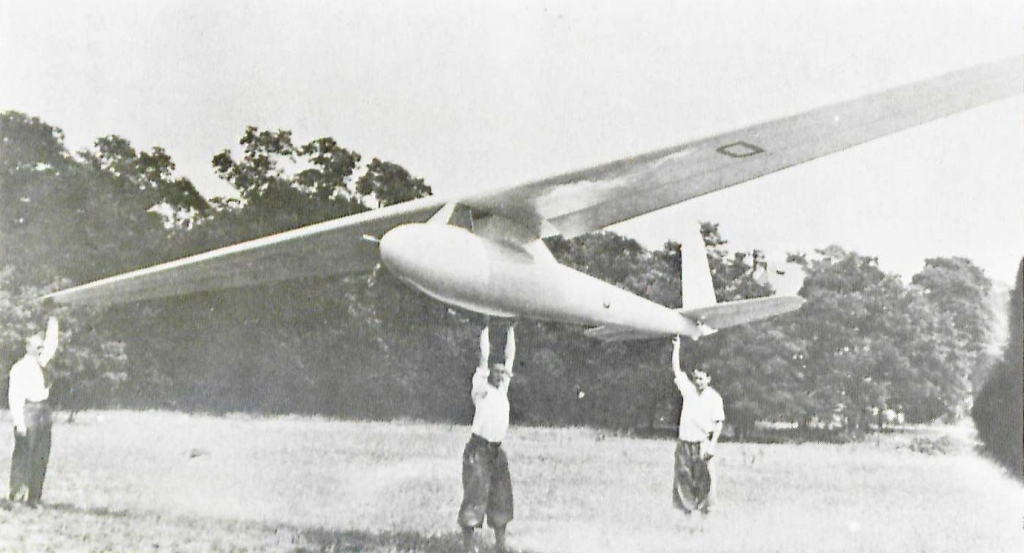 In 1933 Akaflieg began developing the D-28 “Windspiel” that would be compact and very lightweight specialized for thermalling. The finished glider had a wingspan of 12m with ailerons spanning over the whole wing and acting as flaps at the same time, while weighing a mere 54 kg.
In 1933 Akaflieg began developing the D-28 “Windspiel” that would be compact and very lightweight specialized for thermalling. The finished glider had a wingspan of 12m with ailerons spanning over the whole wing and acting as flaps at the same time, while weighing a mere 54 kg.
In comparison gliders nowadays made from glasfibers weigh around 250 kg. “Windspiel” excelled at thermalling and could stay in the air alot longer then its counterparts. To no surprise the D-28 broke the crosscountry worldrecord in 1934 with 240km of distance.
The complete opposite
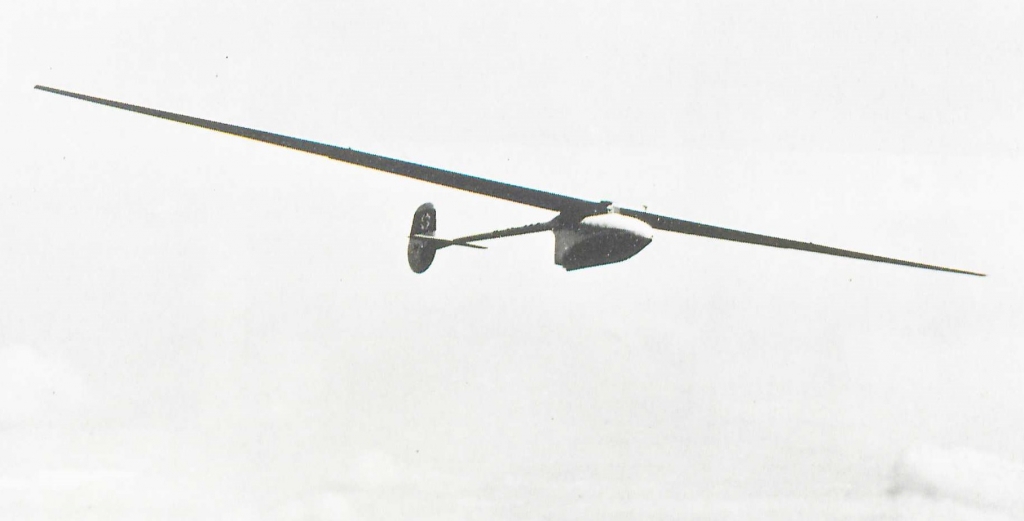 The Akaflieg started to experiment with new Materilas in the mid 1930s. The D-30 “Cirrus” was their first ever glider with wings made out of alloy, also utilizing an airfoil that would pave the way for modern designs. It had a very high aspect ratio of 33,6 and a hingemechanism at about halfway of the wing that allowed them to be tilted either downwards or upwards. This would help to measure the influence different V-shapes would have on gliders. The D-30 was ahead of its time with a glide ratio of 37,6 that was beaten in the early 60s.
The Akaflieg started to experiment with new Materilas in the mid 1930s. The D-30 “Cirrus” was their first ever glider with wings made out of alloy, also utilizing an airfoil that would pave the way for modern designs. It had a very high aspect ratio of 33,6 and a hingemechanism at about halfway of the wing that allowed them to be tilted either downwards or upwards. This would help to measure the influence different V-shapes would have on gliders. The D-30 was ahead of its time with a glide ratio of 37,6 that was beaten in the early 60s.
Tough Times
With the rise of the NS-Regime in 1933 alot of political pressure followed that lead to the shutdown of many Akafliegs
and other aero clubs. With some even having to retrieve their gliders somehow the Akaflieg Darmstadt managed to stay independant. Still it was only a matter of time until the DLV (Deutsche Versuchsanstalt für Luftfahrt) reduced their fincancial support and renamed them to “Flugtechnische Fachgruppe” (Aeronautical Technical Group). With the breakout of WW2 students were quickly involved, TuD was ceased and the workshop of Akaflieg Darmstadt closed.
The rebuild
On the 27th of April 1951 soaring was unbanned in germany and a couple of days before the Akaflieg Darmstadt had already reformed. It was a slow start but a workshop and design office were quickly found allowing the participation in competitions again. In the beginning the Akaflieg Darmstadt had to move alot since it wasn’t the only facillity that had to be rebuild after WW2.
A huge success
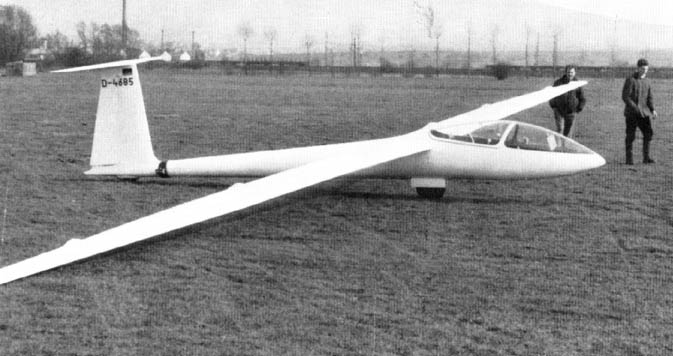 In the year of 1962 prelimitary work on the D-36 “Circe” began. It was one of the early glass sailplanes with fuselage shells and wings made from glass-balsa-glass sandwiches. The designers weren’t the first to implement such materials but they were able to take advantage of its capabilities and create a fitting overall concept. Just like the D-30 the D-36 had a high aspect ratio wing and 2 brandnew, thin laminar flow airfoils. To improve flight characteristics the aileron differential was automatically altered when flaps were deployed.
In the year of 1962 prelimitary work on the D-36 “Circe” began. It was one of the early glass sailplanes with fuselage shells and wings made from glass-balsa-glass sandwiches. The designers weren’t the first to implement such materials but they were able to take advantage of its capabilities and create a fitting overall concept. Just like the D-30 the D-36 had a high aspect ratio wing and 2 brandnew, thin laminar flow airfoils. To improve flight characteristics the aileron differential was automatically altered when flaps were deployed.
This would turn out to be a huge performance jump when Gerhard Waibel – one of the designers – just few weeks after
its maiden flight won the national championship. Like Waibel two of his co-Designers – Wolf Lemke & Klaus Holighaus – gained recognition in the sailplane industry and would later pursue a career in 3 different leading Sailplane Manufacturers of Germany: Alexander Schleicher, Rolladen Schneider and Schempp-Hirth Flugzeugbau.
The D-36 became the Grandfather of modern gliders.
Akaflieg today
Everything beyond the D-36 is still present at Akaflieg Darmstadt. The D-37 “Artemis” is currently being restaured
by members of Akaflieg Hannover while the D-38 is being overhauled. The D-39 “McHinz” and D-40 are still flying.
The newest Project D-43 “Fuchur” is in flight testing and a awaits its final admission. Many prototypes were destroyed
during and after WW2 sadly but the pride of the Akaflieg Darmstadt the D-36 rests safely in Germanys Sailplane Museum at Wasserkuppe – where it all started.

